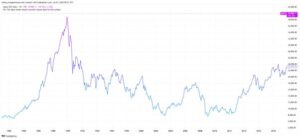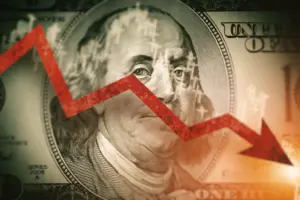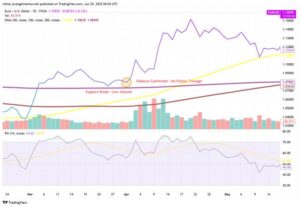As Bitcoin approaches the significant $100,000 milestone, the cryptocurrency market is once again in the spotlight. From predictions of a “million-dollar Bitcoin” to debates over the role of gold and the U.S. dollar, Bitcoin’s financial revolution appears to be just beginning.
The Drivers Behind Asset Price Surges
Many investors and observers in the global cryptocurrency community view Bitcoin as a critical tool to combat traditional currency devaluation. With U.S. government debt levels rising rapidly, asset prices across the board are increasing. Bitcoin, in particular, has demonstrated its ability to outperform inflation consistently, making it an effective store of value.
The current market dynamic reflects what some call a “reverse collapse,” where asset prices are rising so fast that many feel the cost of living has become unaffordable. Essentially, while prices increase, real purchasing power decreases, creating a paradoxical decline in living standards.
Strategic Reserves and Sovereign FOMO
Recent U.S. policy discussions suggest Bitcoin could become part of a national strategic reserve. For instance, Wyoming has introduced legislation advocating for a state Bitcoin reserve, paving the way for what some call “sovereign FOMO (fear of missing out).” Should the U.S. act on this, G7 and G20 nations may follow suit, injecting further momentum into Bitcoin’s price growth.
Some forecasts predict Bitcoin could reach $1 million by 2030. These projections are based on historical sensitivity analyses of Bitcoin to monetary supply expansion and the growing global demand for currency stability.
The Role of Gold vs. Bitcoin’s Rise
Amid high debt levels and rising interest costs, the U.S. may need to adopt more aggressive measures to maintain the dollar’s dominance. Two potential strategies include revaluing gold to a market level of $10,000 to $20,000 per ounce or shifting to a “Bitcoin standard.”
While gold remains a traditional safe-haven asset, Bitcoin’s innovative technology and decentralized nature are increasingly drawing investor attention. Bitcoin is not only seen as a new means of wealth preservation but also as a revolutionary tool reshaping the global financial system.
Conclusion
As the global financial landscape evolves, Bitcoin’s potential is being recognized by more nations and investors. From its possible role as a strategic reserve to its ability to counter currency devaluation, Bitcoin is emerging as a transformative force in the traditional financial system. Whether or not the million-dollar price predictions materialize, Bitcoin’s revolutionary impact is already evident, and this transformation is just getting started.





